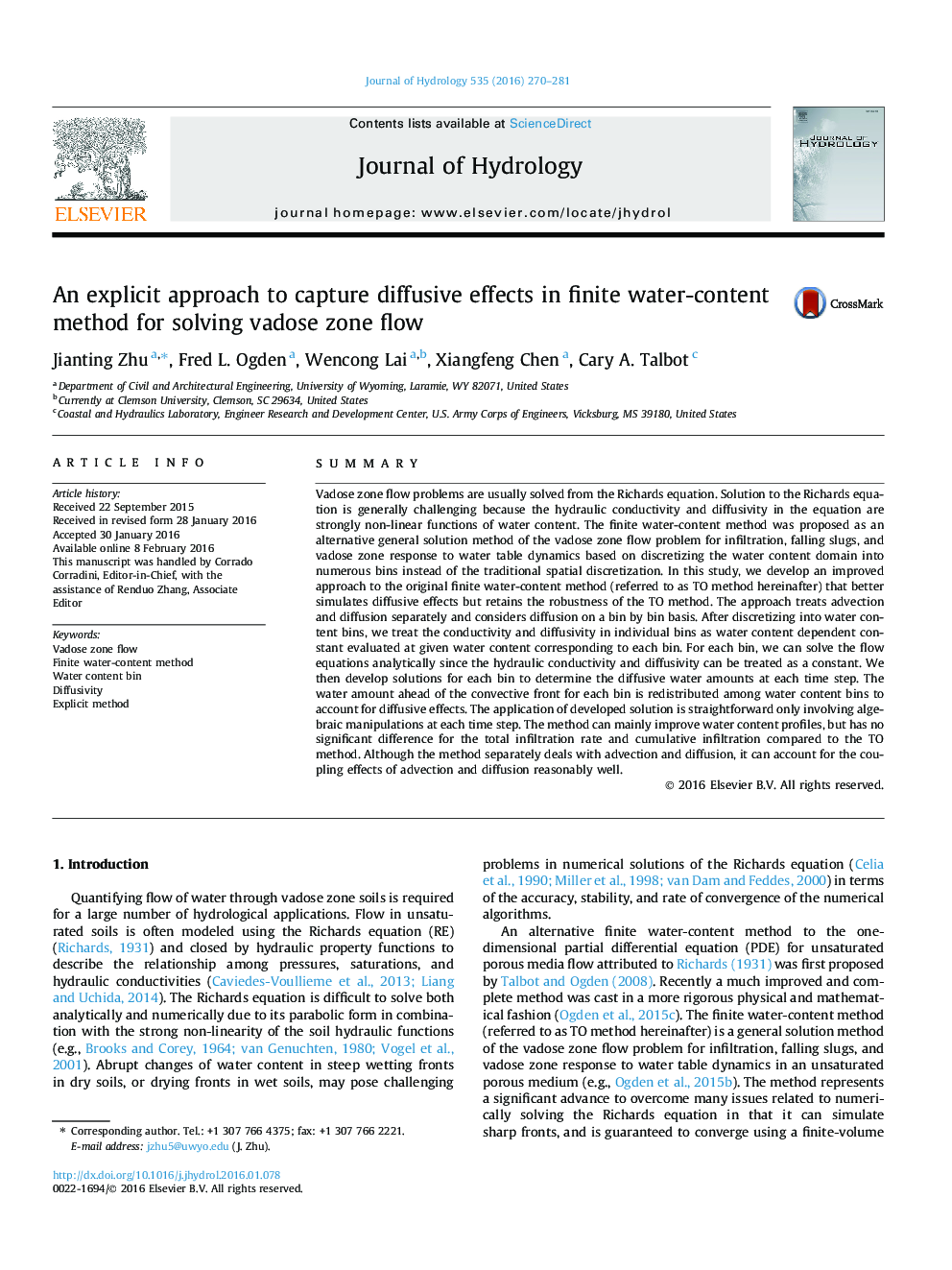| Article ID | Journal | Published Year | Pages | File Type |
|---|---|---|---|---|
| 6410111 | Journal of Hydrology | 2016 | 12 Pages |
â¢We developed a method to explicitly include diffusive effects in vadose zone flow.â¢The entire water content domain is discretized into numerous bins.â¢Diffusive effects are considered on the basis of individual water content bins.â¢We treat advection and diffusion separately for each water content bin.â¢The method improves prediction of water content profiles in vadose zone flow.
SummaryVadose zone flow problems are usually solved from the Richards equation. Solution to the Richards equation is generally challenging because the hydraulic conductivity and diffusivity in the equation are strongly non-linear functions of water content. The finite water-content method was proposed as an alternative general solution method of the vadose zone flow problem for infiltration, falling slugs, and vadose zone response to water table dynamics based on discretizing the water content domain into numerous bins instead of the traditional spatial discretization. In this study, we develop an improved approach to the original finite water-content method (referred to as TO method hereinafter) that better simulates diffusive effects but retains the robustness of the TO method. The approach treats advection and diffusion separately and considers diffusion on a bin by bin basis. After discretizing into water content bins, we treat the conductivity and diffusivity in individual bins as water content dependent constant evaluated at given water content corresponding to each bin. For each bin, we can solve the flow equations analytically since the hydraulic conductivity and diffusivity can be treated as a constant. We then develop solutions for each bin to determine the diffusive water amounts at each time step. The water amount ahead of the convective front for each bin is redistributed among water content bins to account for diffusive effects. The application of developed solution is straightforward only involving algebraic manipulations at each time step. The method can mainly improve water content profiles, but has no significant difference for the total infiltration rate and cumulative infiltration compared to the TO method. Although the method separately deals with advection and diffusion, it can account for the coupling effects of advection and diffusion reasonably well.
